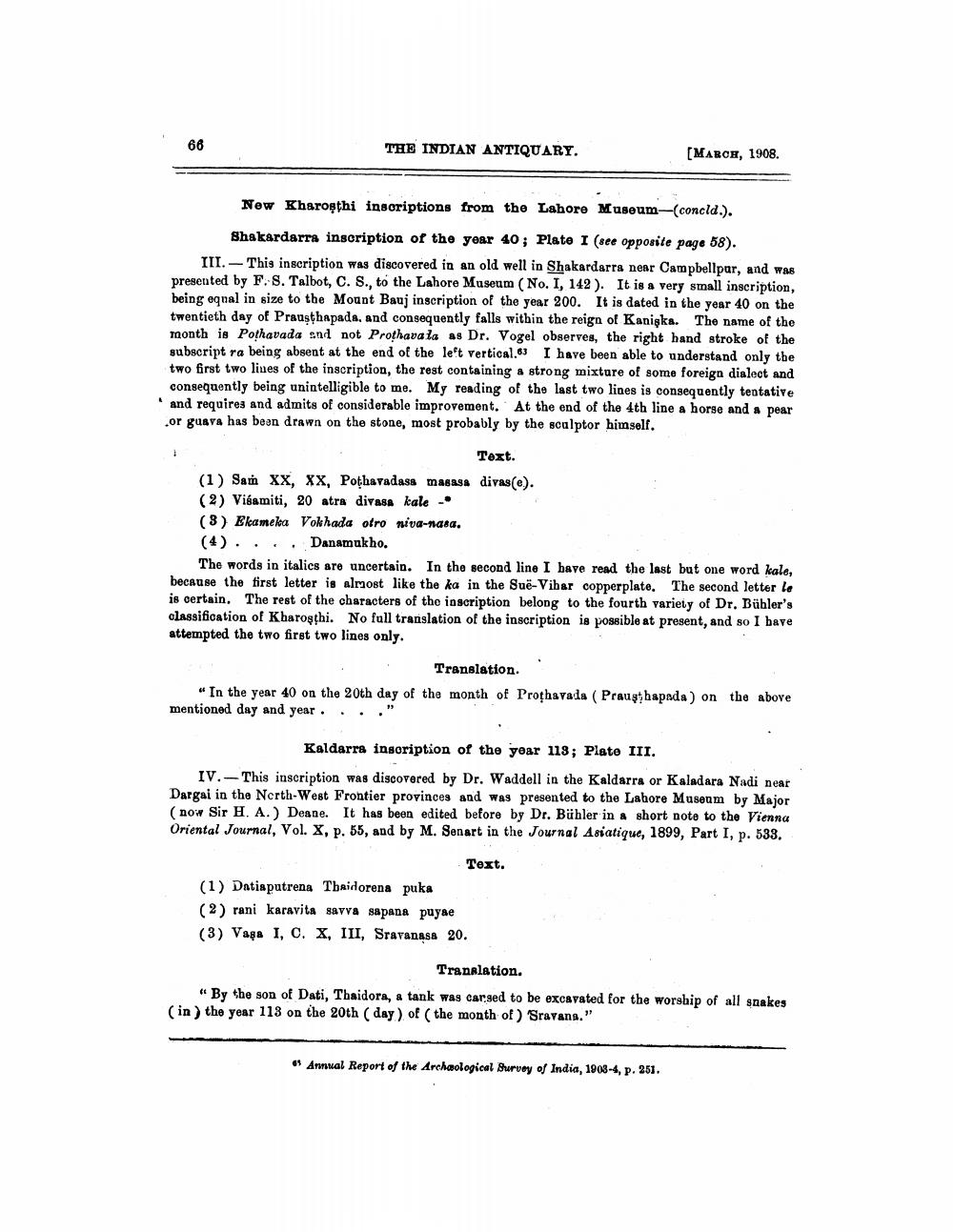________________
66
THE INDIAN ANTIQUARY.
MARCH, 1908.
Now Kharoşthi inscriptions from the Lahore Museum-(concld.).
Shakardarra inscription of the year 40; Plate I (see Opposite page 58). III. - This inscription was discovered in an old well in Shakardarra near Campbellpar, and was presented by F. S. Talbot, C. S., to the Lahore Museum (No. 1, 142 ). It is a very small inscription, being eqnal in size to the Mount Bauj inscription of the year 200. It is dated in the year 40 on the twentieth day of Prausthapada, and consequently falls within the reign of Kanisks. The name of the month is Pothavada and not Prothava la as Dr. Vogel observes, the right hand stroke of the subscript ra being absent at the end of the left vertical. I have been able to understand only the two first two lines of the inscription, the rest containing a strong mixture of some foreign dialect and consequently being unintelligible to me. My reading of the last two lines is consequently tentative and requires and admits of considerable improvement. At the end of the 4th line a horse and a pear or guava has been drawn on the stone, most probably by the sculptor himself.
Text. (1) San xx, xx, Pothavadass masass divas(e). (2) Visamiti, 20 atra divass kale - (3) Ekameka Vokhada otro niva-nasa. (4).... Danamukho.
The words in italics are uncertain. In the second line I have read the last but one word kale, because the first letter is almost like the ka in the Suë-Vibar copperplate. The second letter le is certain. The rest of the characters of the inscription belong to the fourth variety of Dr. Bühler's classification of Kharoşthi. No full translation of the inscription is possible at present, and so I bave attempted the two first two lines only.
Translation. "In the year 40 on the 20th day of the month of Prophavada (Prausthapada) on the above mentioned day and year. ..."
Kaldarra insoription of the year 118; Plate III. IV.- This inscription was discovered by Dr. Waddell in the Kaldarra or Kaladara Nadi near Dargai in the North-West Frontier provinces and was presented to the Lahore Museum by Major (now Sir H. A.) Deane. It has been edited before by Dr. Bühler in a short note to the Vienna Oriental Journal, Vol. X, p. 55, and by M. Senart in the Journal Asiatique, 1899, Part I, p. 533.
Text. (1) Datiaputrena Thaidorena puka (2) rani karavita savva sapana puyae (3) Vasa I, C. X, III, Sravanasa 20.
Translation. "By the son of Dati, Thaidora, a tank was carged to be excavated for the worship of all snakes (in) the year 113 on the 20th (day) of the month of Sravana."
Annual Report of the Archaological Survey of India, 1908-4, p. 251.




